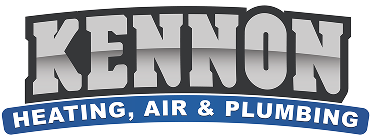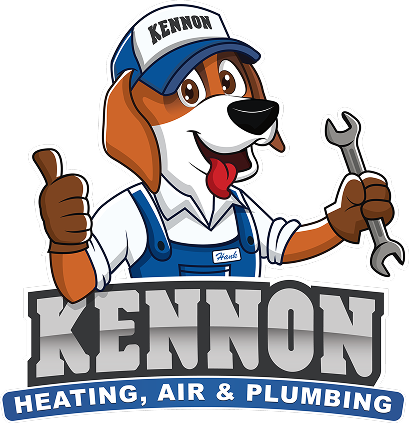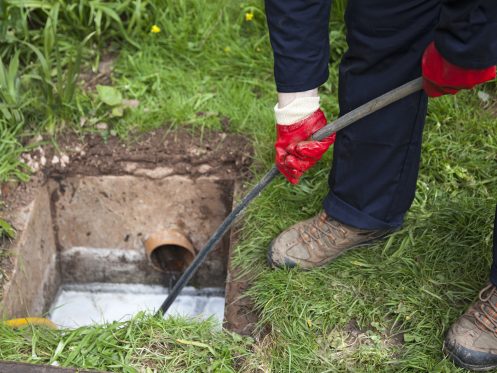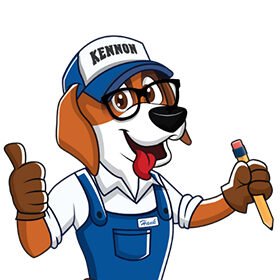When warmer weather rolls in, your plumbing doesn’t get a vacation. Extra showers, garden hose use, and guests can push a strained sewer line past its limit. What seemed like a slow drain in May might become a full backup in June. At Kennon Heating, Air & Plumbing, in Cumming, GA, we’ve seen how summer stress tests weak plumbing systems. If your sewer line is starting to act up, now is the best time to pay attention. That way, you’re not calling for help while your yard turns into a swamp. The following are some clues you shouldn’t ignore.
Slow Drains That Don’t Seem to Clear
When water lingers, you might chalk it up to hair, grease, or a minor clog. That’s common enough in sinks and tubs. However, if you notice that multiple drains seem to slow down simultaneously, it usually indicates a deeper issue. Your sewer line moves everything from your home out to the main line, and when that passage starts to narrow, all connected fixtures show signs of strain.
If plungers and cleaning techniques don’t help, it’s probably not a surface problem. Roots, debris, or collapsed sections could restrict the flow beneath your property. Instead of pushing the issue aside, pay attention to what your drains are trying to tell you. Consistent slowing means your sewer line is struggling to keep up, and that delay often shows up well before a backup ever hits the floor.
Unusual Sounds From Below the Surface
Drains aren’t supposed to talk back. If you hear gurgling after the toilet flushes or when you empty a bath, that noise may come from trapped air fighting its way out. It happens when the line can’t breathe properly. Wastewater needs airflow to move smoothly, and when the pipe starts to clog, pressure builds up. That trapped air forces itself through the water sitting in your drains, creating a strange bubbling sound that’s hard to ignore once you’ve noticed it.
Sometimes it sounds like a kettle simmering. Other times, it resembles the slurp of a near-empty cup. Either way, it suggests that something’s going wrong deeper down. You might hear it in the sink next to the bath or in a shower across the house. That cross-talk between fixtures usually means a single blockage is affecting multiple lines. Left unchecked, that noise becomes a warning siren for the mess building underground.
Wet Spots in the Yard That Should Be Dry
Soft patches in the lawn can show up even when the sprinkler hasn’t been running. If your grass feels squishy underfoot in just one area, especially when the weather’s been dry, it might not be a drainage issue. Sewer leaks don’t always gush. They seep. A crack in the line can slowly push wastewater into the soil, soaking the ground without triggering a visible flood. The moisture builds gradually, changing the way your yard feels long before you see a sinkhole or smell anything foul.
In some cases, the grass above that area grows faster than the rest, fed by the extra nutrients in the waste below. You might not suspect the sewer line at first, especially if your home doesn’t have any interior symptoms. But a single soggy patch in an otherwise dry yard should make you look twice. What you’re stepping on could be the first surface clue of a broken line underground.
Spring Brings the Perfect Window for Inspection
If you’ve been putting off a sewer inspection, spring gives you the best window to act. Cold weather makes underground work harder. The ground is tougher to navigate, roots dig deeper, and frozen soil can hide early signs of failure. But when things start to thaw, it gets easier to see what’s going on. Camera inspections capitalize on that timing. A technician threads a small waterproof camera into the clean out and follows the line from your house to the street. You see the full picture without excavation.
What makes spring even better is how quickly you can go from inspection to solution. If the line shows damage, trenchless repair methods let you skip the big mess. Instead of ripping through your lawn, contractors create a few access points and work from there. They can insert a new liner to seal gaps or replace a failing section using pipe bursting. The original route remains unchanged, but the pipe itself is upgraded.
That way, you avoid dragging out repairs during the hot months, when everything from watering the lawn to hosting guests pushes your plumbing to the limit. Catching the issue early and fixing it cleanly lets you head into summer without worrying about a hidden leak or a surprise backup waiting underground.
What Happens Beneath the Surface Matters
A lot of sewer problems stay hidden until they don’t. You might go months without noticing anything obvious. Then a flush backs up or a sink refuses to drain. At that stage, a drain snake won’t help. Corrosion, invasive roots, or pipe separations don’t repair themselves. They grow worse.
An older line made from clay, cast iron, or Orangeburg starts to shift with soil changes and use. Joints misalign. Tree roots push through seams. Sediment builds into small dams that catch paper and grease, turning a partial block into a full one. You don’t want to deal with that fallout mid-summer when plumbers are booked and outdoor work becomes harder. Knowing what to look for now gives you room to act while the weather and schedule still work in your favor.
Gutters and Rain Runoff Play a Bigger Role Than You Think
Your sewer system isn’t just affected by what you send down the drain. Rainwater adds to the equation, too. If your gutters or downspouts connect to the sewer line, either directly or through outdated drainage systems, a heavy storm can quickly flood the line. That surge leads to backups, especially if the pipe already has partial clogs.
Even if your system is separate, standing water around the foundation can seep into cracks or soften the ground that supports the line. That shifting soil stresses the pipe and worsens small problems you didn’t know you had. Keeping gutters clear and water flowing away from the house helps more than just the roof and siding. It lightens the load on your sewer line, too. Simple fixes, such as redirecting a downspout or grading the soil away from your home, can help extend the life of your plumbing and reduce the risk of water damage indoors.
Unexplained Odors
Smells don’t always stick to the bathroom. If you notice a lingering sewage odor near a basement drain, around the yard, or even from a floor-level vent, it could point to a break in the line. When a pipe opens underground, gases travel through the soil and enter the house. Those fumes carry sulfur and other byproducts that create the sharp, unmistakable scent of raw sewage.
It doesn’t take much of a leak to let those gases out. You might not see water at all. Just the smell. That makes it easier to ignore or misidentify. But sewer gas doesn’t belong in your home. It affects comfort and, in some cases, indoor air quality. If the smell shows up consistently, especially after a long shower or heavy laundry load, you’ll want someone to check the integrity of the system.
Fix Your Sewer Line Today
Sewer line problems rarely fix themselves, and summer doesn’t do them any favors. A slow gurgle or patchy yard might seem small now, but the heat and added demand can turn minor issues into expensive headaches. If you want to head into the season with confidence, Kennon Heating, Air & Plumbing in Cumming can help. We offer drain cleaning, leak detection, and trenchless pipe repair.
Whether you see red flags or just want preventive care for your plumbing in Cumming, call Kennon Heating, Air & Plumbing!



